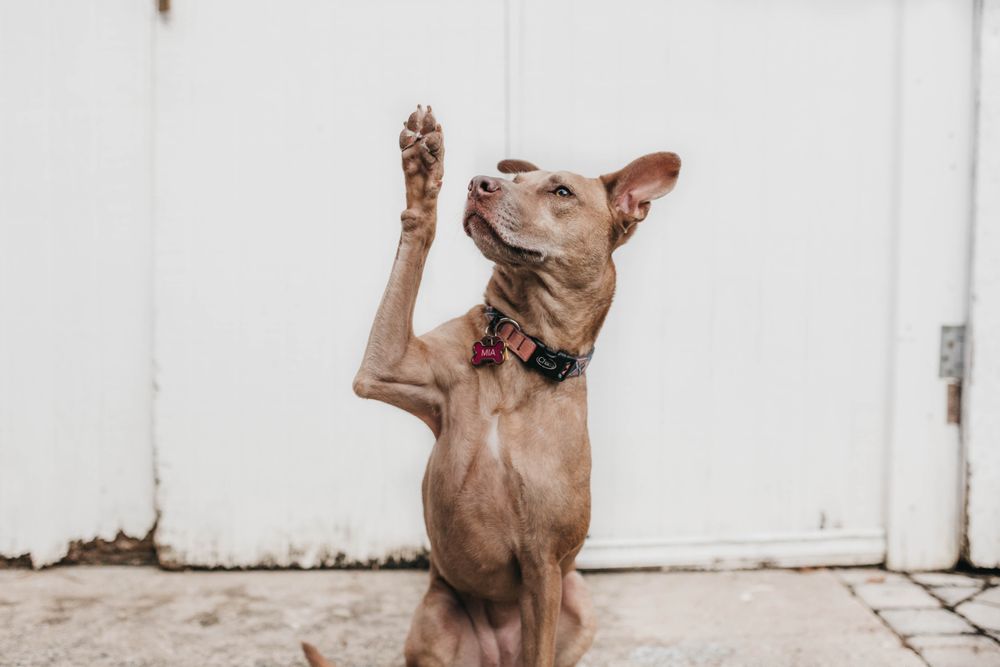So much behavior is the result of the physical space we inhabit. Just think about how much of your behavior is dictated by the buildings you occupy, the design of the objects you use and the structure of the city or town in which you live. Apply this same rationale to your dog, and you will start to understand why it’s important to create a comfortable home environment and also offer them a “safe space” as a retreat whenever they need a break. A crate can be a great tool to create a comfortable home environment for your dog and this article will explain:
- Why crate training is important
- The 3 phases of crate training your dog
- What other pet parents are asking about crate training
Let’s get started!
Why is crate training important for your dog?
A crate is a great way to create a private, safe haven for your dog. This is a space they can retreat to if they're feeling overwhelmed or need to be alone. Crate training can also be helpful when house training, traveling, and teaching your dog how to be alone. For dogs that aren't comfortable being crated, you can consider using a baby gate or pen to create a private or confined space for them when you leave the house.
3 Phases of crate training your dog
The crate training process can be broken down into 3 phases:
- Phase 1 - Establishing the crate as a happy place. Leave the crate door open and drop treats, toys and other surprises inside. You want your dog to explore the crate on their own and develop good feelings about the space.
- Phase 2 - Learning to relax inside the crate. Use your “Down” cue to get your dog to lie down in the crate. Once they’re lying down in the crate, slowly feed your dog treats for up to one minute.
- Phase 3 - Closing the door and building duration over time. Use your “Down” cue to get your dog to lie down in the crate. Then, place a treat between their paws and close the door for one second. Immediately open the door and give your dog another treat. Leave the door open for 10 seconds then repeat the exercise 5-10 times. With practice, and as your dog becomes more comfortable, you can increase the amount of time the crate door is closed.
To fully realize the benefits of crate training, work through the above phases at your dog’s speed and:
- Focus on the way your pup feels when they’re in the crate. You want to ensure you’re creating good feelings about being in the crate.
- Make the crate a place that your pup can enjoy when you’re home.
- Never force them to be in the crate or leave the door closed longer than they’re comfortable with.

Frequently asked questions about crate training your dog
Is it cruel to crate a dog at night?
The short answer is, “It depends.” If your dog is comfortable in their crate, and is happy to be there overnight, then crating your dog at night could be a good option. On the other hand, if your dog is not comfortable in their crate, and exhibits behaviors like barking, crying or chewing on the bars, then crating your dog at night is almost certainly a bad idea.
Remember, when it comes to crate training, you want to focus on the way your pup feels when they’re in the crate and always move at their speed. If you need to confine your dog overnight, and they’re uncomfortable in the crate, consider using a baby gate or pen to create a confined space for them. Do not force them into the crate.
How long does it take to crate train a dog?
Every dog’s timeline is different, but the key is to move at your dog’s speed and focus on how they’re feeling. By doing this, you will help your dog create a positive association with the crate and increase the likelihood that your dog sees the crate as a safe space over time.
Should you let your dog cry when crate training?
No. The crate training process requires that you move at your dog’s speed, focus on how they’re feeling, and never force them to be in the crate or close the door longer than they’re comfortable with. If your dog is crying, they’re uncomfortable and you’re moving too fast. Take a step back, slow things down, and work on crate training another day.




